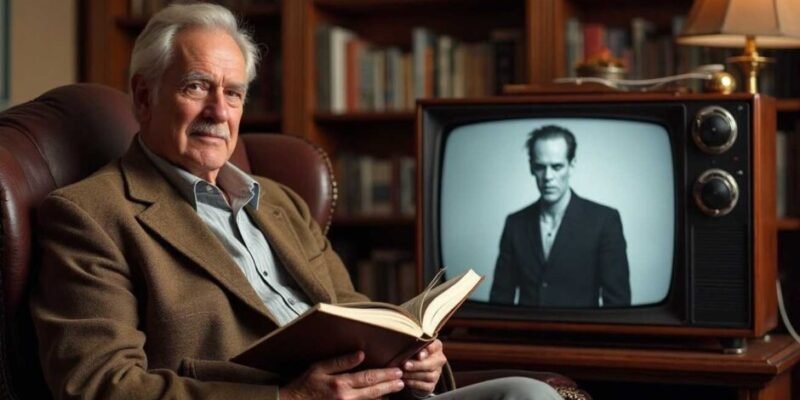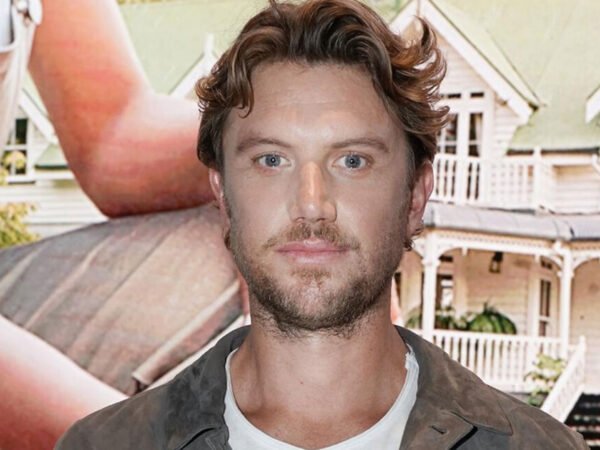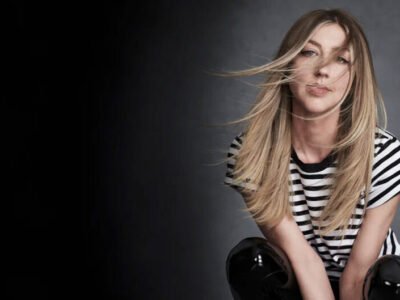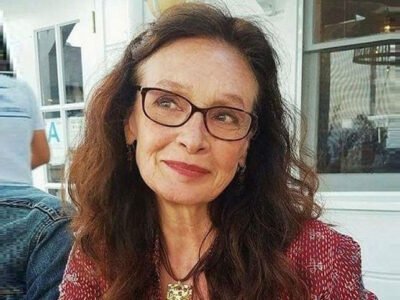Fred Gwynne’s net worth reached $2 million when he died in July 1993. This sum reflected his success as a versatile entertainer. His towering height of 6ft 5in made him the perfect choice to play the lovable Frankenstein-like patriarch Herman Munster in “The Munsters”.
New York City welcomed Gwynne’s birth on July 10, 1926. He built a career that went way beyond the reach and influence of his famous TV roles. People knew him best as Herman Munster, but his life’s work covered much more. He served as a radioman in World War II and wrote successful children’s books[-2]. His unique physical presence and talent for diverse roles shaped his entertainment legacy and helped him build substantial wealth throughout his career.
Fred Gwynne’s Early Life and Education
Frederick Hubbard Gwynne was born on July 10, 1926, in New York City to a family with varied backgrounds and talents. His father, Frederick Walker Gwynne, was a successful stockbroker and partner at the respected financial firm Gwynne Brothers. Young Fred faced tragedy early in life when his father died from complications after routine surgery. Fred was only eight years old at the time. This loss shaped his early years and maybe even influenced his artistic sensibilities later in life.
Family background and childhood
Fred grew up in Tuxedo Park, New York, with all the advantages of an upper-middle-class life. His mother’s family was wealthy, and Dorothy Ficken Gwynne made sure her son got the best education possible. Fred attended the prestigious Groton School in Massachusetts, where he found his passion for performance and art. His remarkable height became noticeable during these years – a physical trait that would make him stand out in Hollywood later.
Military service and Harvard years
World War II temporarily changed Fred’s educational plans after high school. He served in the United States Navy as a radioman on a submarine chaser in the Pacific theater. After the war, Fred enrolled at Harvard University, where his creative talents blossomed. He chose English as his major and became an active member of the prominent Harvard Lampoon, eventually becoming its president. His performance skills grew through comedic roles in the Hasty Pudding Theatricals.
How his education shaped his career
Harvard became the perfect training ground for Fred’s varied career path. The Harvard Lampoon helped develop his wit and writing abilities – skills he later used to write children’s books. His time with Hasty Pudding Theatricals gave him valuable stage experience for his future acting career. Harvard’s art studies nurtured his visual creativity, which he later used to illustrate his own books.
Fred worked briefly as a copywriter at J. Walter Thompson advertising agency before turning to professional acting. Notwithstanding that, his education built the foundation for a diverse career in acting, writing, and illustration. His Harvard connections introduced him to key figures in entertainment and publishing, which created valuable networks throughout his professional life.
Career Highlights That Built His Fame
Fred Gwynne’s net worth grew substantially after he switched from New York City stage roles to television.
Breakthrough with Car 54, Where Are You?
Producer-writer Nat Hiken noticed Gwynne’s talent after his memorable guest appearance on “The Phil Silvers Show” in 1955. This exposure helped him land the role of Officer Francis Muldoon in “Car 54, Where Are You?” (1961-1963). The series ran for just two seasons but showcased Gwynne’s exceptional comedic timing and made him a television star.
Becoming Herman Munster
Gwynne soon landed the role that shaped his career—Herman Munster in “The Munsters” (1964-1966). The daily transformation demanded three hours of makeup, four-inch platform boots that made his height 6’9″, and 40-50 pounds of padding. Despite these physical challenges, Gwynne grew fond of the character. He admitted, “I might as well tell you the truth. I love old Herman Munster. Much as I try not to…”.
Later film roles and theater work
Herman Munster’s success created typecasting challenges, but Gwynne rebuilt his career through theater. His talent earned him an Obie award for “Grand Magic” (1979). Critics praised his portrayal of Big Daddy in the 1974 Broadway revival of “Cat on a Hot Tin Roof”. The 1980s brought a film career resurgence with roles in “The Cotton Club” (1984), “Fatal Attraction” (1987), and his standout performance as Jud Crandall in “Pet Sematary” (1989). Judge Chamberlain Haller in “My Cousin Vinny” (1992) became his memorable final role.
Children’s books and artistic pursuits
Gwynne’s Harvard-trained artistic skills led him to write and illustrate children’s books. His first book “Best in Show” appeared in 1958 (later republished as “Easy to See Why”), and he created about ten books throughout his career. His clever wordplay books like “The King Who Rained” (1970) and “A Chocolate Moose for Dinner” (1976) became bestsellers, selling 20,000-25,000 copies each year.
Fred Gwynne Net Worth Breakdown
Fred Gwynne’s financial legacy showed both rewards and limits of his unique Hollywood career when he passed away in July 1993.
Estimated net worth at time of death
Multiple reliable sources confirm that Fred Gwynne’s net worth reached about $2 million when he died. This amount came from his 40-year entertainment career. His financial success stemmed from acting, writing, illustration, and fine art. His diverse talents helped build his wealth over the years.
Earnings from TV and film
Playing Herman Munster brought Gwynne a yearly income of $200,000 during the show’s run. The role’s success came with a price. After “The Munsters” ended, he struggled to find work because of typecasting. His determination paid off later with notable roles in “Pet Sematary” and his last movie “My Cousin Vinny” (1992).
Income from writing and art
Gwynne created extra income streams through his creative work. His children’s books brought steady money thanks to clever wordplay and illustrations. Young readers and parents loved titles like “A Chocolate Moose for Dinner” and “The King Who Rained”. He started showing his paintings publicly in 1989, which added another source of income in his later years.
Real estate and other assets
Much of Gwynne’s wealth sat in his Maryland farm where he lived during his later years. The property made up a big part of his assets. Reports show he spread his investments across stocks and bonds. This smart approach to money management helped secure his financial future.
Personal Life and Final Years
Fred Gwynne’s life behind the camera was a mix of personal joys and deep sorrows, despite his iconic roles and creative work.
Fred Gwynne wife and children
Fred Gwynne tied the knot with socialite Jean “Foxy” Reynard in 1952. Jean’s grandfather was former New York City mayor William Jay Gaynor. Their 28-year marriage brought them five children: Kieron (1953-1998), Gaynor (born 1954), Evan (born 1956), Dylan (1962-1963), and Madyn (born 1965). The family faced heartbreak when their son Dylan drowned in their swimming pool before his first birthday. This loss deeply affected Gwynne’s outlook on life. The couple divorced in 1980, and Gwynne found love again with Deborah Flater, whom he married in 1988. They stayed together until his death.
How tall was Fred Gwynne?
Fred Gwynne’s height set him apart from others in Hollywood. He stood an impressive 6 feet 5 inches tall, which helped him land his famous role as Herman Munster. A drama teacher once told him he was too tall to act, but Gwynne proved this prediction wrong.
Life on the Maryland farm
Gwynne and his second wife Deborah found peace in a renovated farmhouse in rural Taneytown, Maryland. Their neighbors knew him as a friendly person who valued his privacy and kept his professional life separate from his personal world[212]. This countryside retreat gave him the quiet space he needed after years in entertainment, where he could focus on writing and art.
Battle with pancreatic cancer
Doctors diagnosed Gwynne with pancreatic cancer in early 1993. He chose to keep his illness private, sharing it only with close family. Gwynne passed away on July 2, 1993, just eight days before his 67th birthday. He spent his final moments in his Maryland farm’s cigar room, surrounded by his wife and four children. The family honored his wishes with a private funeral, and they laid him to rest in Sandy Mount United Methodist Church Cemetery in Finksburg, Maryland, in an unmarked grave.
Conclusion
Fred Gwynne’s life shows proof of his artistic range and professional resilience. His career spanned four decades, and he turned what could have been limitations – especially his towering 6’5″ frame – into defining features that helped build his $2 million net worth when he died. People typecast him after his famous role as Herman Munster. In spite of that, he rebuilt his reputation through acclaimed theater work and memorable film roles like Judge Chamberlain Haller in “My Cousin Vinny.”
His creative work beyond acting added greatly to his financial legacy. He wrote children’s books filled with clever wordplay and whimsical illustrations. These books became steady moneymakers, selling thousands of copies each year. His paintings also became part of his artistic portfolio in his later years.
Success in his career didn’t change his priorities. He ended up choosing privacy and simplicity, moving to a Maryland farm to keep his celebrity status separate from who he really was. His wealth was considerable, but his cultural influence through unforgettable characters and creative works mattered more.
Without doubt, Fred Gwynne’s financial success is just one part of his story. His true legacy includes his amazing ability to adapt across entertainment platforms, bounce back from career setbacks, and express himself authentically through art. Pancreatic cancer took his life just days before his 67th birthday. Yet his varied contributions to American culture still strike a chord decades after he passed away. The man behind Herman Munster proved to be nowhere near a one-role wonder – he was a multi-talented artist whose financial success was just one aspect of his remarkable life.
FAQs
Q1. What was Fred Gwynne’s net worth at the time of his death? Fred Gwynne’s net worth was estimated to be around $2 million when he passed away in July 1993.
Q2. How tall was Fred Gwynne, and did his height impact his career? Fred Gwynne stood at an impressive 6 feet 5 inches tall. His remarkable height was a significant factor in landing his iconic role as Herman Munster and became one of his most distinguishing physical characteristics throughout his career.
Q3. What were Fred Gwynne’s notable roles besides Herman Munster? Besides Herman Munster, Gwynne had notable roles in “Car 54, Where Are You?”, “Pet Sematary”, and “My Cousin Vinny”. He also had a successful career in theater, winning an Obie award for his performance in “Grand Magic”.
Q4. Did Fred Gwynne have any other talents besides acting? Yes, Fred Gwynne was also a talented writer and illustrator. He authored and illustrated several popular children’s books, including “The King Who Rained” and “A Chocolate Moose for Dinner”. Additionally, he pursued painting later in life.
Q5. Where did Fred Gwynne spend his final years? In his later years, Fred Gwynne lived on a renovated farmhouse in rural Taneytown, Maryland. This rural retreat provided him with the privacy he sought after his long career in entertainment, allowing him to focus on his writing and artistic pursuits.
















